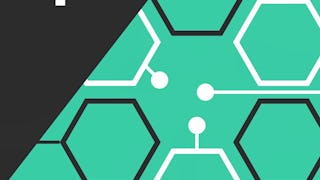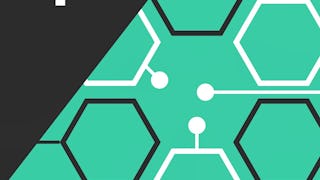This course is tailored for automation testers and developers looking to advance their expertise in Selenium WebDriver and framework design. Starting with the latest Selenium 4.0 features, you’ll explore new capabilities like relative locators and advanced window handling techniques. The course then delves into taking partial screenshots of WebElements and validating UX aspects through element dimensions, ensuring you can handle even the most intricate automation tasks.

Enjoy unlimited growth with a year of Coursera Plus for $199 (regularly $399). Save now.

Advanced Selenium WebDriver Techniques and Framework Design
This course is part of Selenium WebDriver with Java and Frameworks for all levels Specialization

Instructor: Packt - Course Instructors
Included with
Recommended experience
What you'll learn
Understand the latest features of Selenium 4.0, including relative locators and window handling techniques.
Apply TestNG to organize and execute test cases, including parallel execution and custom configurations.
Evaluate the integration of Selenium with Jenkins for CI/CD, ensuring the automation framework meets continuous delivery needs.
Build a scalable automation framework with Maven, using Cucumber for BDD and Extent Reports for detailed logging and visualization.
Skills you'll gain
Details to know

Add to your LinkedIn profile
6 assignments
See how employees at top companies are mastering in-demand skills

Build your subject-matter expertise
- Learn new concepts from industry experts
- Gain a foundational understanding of a subject or tool
- Develop job-relevant skills with hands-on projects
- Earn a shareable career certificate

There are 11 modules in this course
In this module, we will explore the latest updates in Selenium 4.0, including the use of relative locators, managing multiple browser windows/tabs, and advanced WebElement handling techniques such as taking partial screenshots and validating element dimensions for UX purposes.
What's included
5 videos2 readings
In this module, we will delve into TestNG, highlighting its advantages and how it integrates into automation frameworks. We will cover everything from basic setup and XML configurations to advanced features like test prioritization, parallel execution, and using annotations for optimized test management.
What's included
15 videos
In this module, we will focus on essential Java OOP principles that are crucial for framework development. You will learn how to streamline your test code by leveraging inheritance with TestNG annotations, and how to use constructors and the 'super' keyword to pass values efficiently, ensuring a robust and reusable test framework.
What's included
3 videos1 assignment
In this module, we will guide you through the process of creating a Maven project tailored for Selenium test automation. You will learn how to set up dependencies, execute comprehensive end-to-end tests, and leverage Java Streams for efficient data processing within your tests.
What's included
8 videos
In this module, we will introduce you to the Page Object Model (POM) design pattern, crucial for maintaining scalable test frameworks. You’ll learn how to create page object classes, implement Page Factory, and refactor your tests to ensure they are maintainable and efficient.
What's included
8 videos
In this module, we will focus on optimizing your test framework by configuring common test methods and global properties. You will also learn how to execute tests in parallel and use TestNG attributes to manage complex test scenarios efficiently.
What's included
6 videos1 assignment
In this module, we will outline strategies for executing parallel tests and managing test execution control. You will learn how to integrate parameterization into your tests using data providers, handle test data dynamically, and implement utilities for capturing screenshots of failed tests.
What's included
4 videos
In this module, we will focus on enhancing your test framework with HTML reporting and thread-safe execution. You’ll learn how to generate comprehensive Extent Reports, integrate them with TestNG listeners, and implement thread-safe practices using the ThreadLocal class to avoid synchronization problems during test execution.
What's included
5 videos
In this module, we will explore how to run tests from the terminal using Maven, and integrate your Selenium framework with Jenkins for continuous integration and deployment (CI/CD). You’ll also learn to schedule automated test runs and configure them for headless execution within Jenkins.
What's included
6 videos1 assignment
In this module, we will cover the integration of Cucumber into your Selenium framework, enabling behavior-driven development (BDD). You will learn how to set up Cucumber, create feature files, and implement step definitions to control the execution of your test scenarios effectively.
What's included
7 videos
In this module, we will prepare you for interviews by discussing common questions related to Selenium framework design and object-oriented programming (OOP) principles. You will also gain insights into explaining your framework’s architecture and design choices during interviews.
What's included
3 videos1 reading3 assignments
Earn a career certificate
Add this credential to your LinkedIn profile, resume, or CV. Share it on social media and in your performance review.
Instructor

Offered by
Explore more from Software Development
 Status: Free Trial
Status: Free Trial Status: Free Trial
Status: Free Trial
Why people choose Coursera for their career





Open new doors with Coursera Plus
Unlimited access to 10,000+ world-class courses, hands-on projects, and job-ready certificate programs - all included in your subscription
Advance your career with an online degree
Earn a degree from world-class universities - 100% online
Join over 3,400 global companies that choose Coursera for Business
Upskill your employees to excel in the digital economy
Frequently asked questions
Yes, you can preview the first video and view the syllabus before you enroll. You must purchase the course to access content not included in the preview.
If you decide to enroll in the course before the session start date, you will have access to all of the lecture videos and readings for the course. You’ll be able to submit assignments once the session starts.
Once you enroll and your session begins, you will have access to all videos and other resources, including reading items and the course discussion forum. You’ll be able to view and submit practice assessments, and complete required graded assignments to earn a grade and a Course Certificate.
More questions
Financial aid available,



